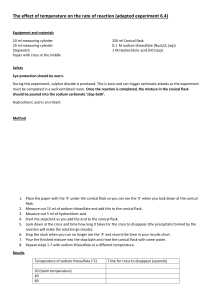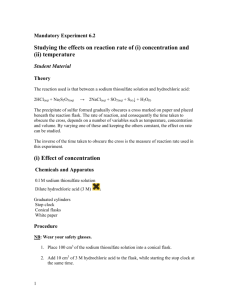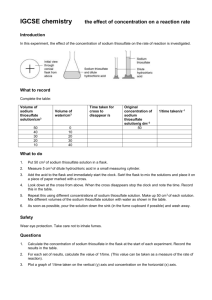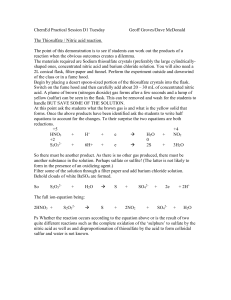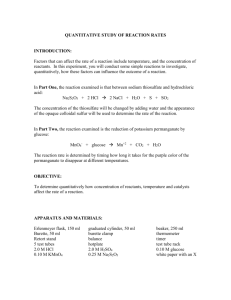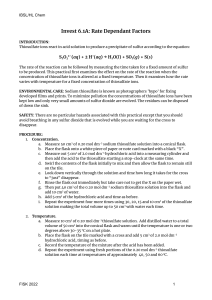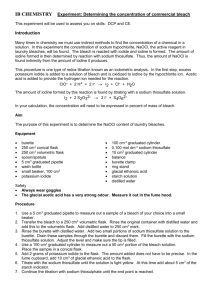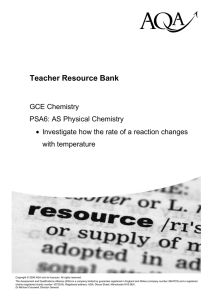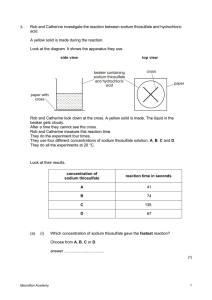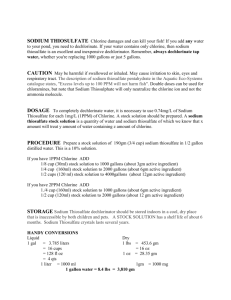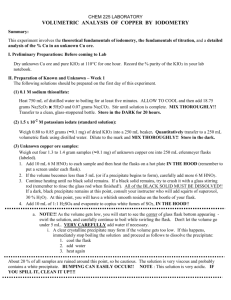Kinetics Lab: Concentration & Temperature Effects
advertisement
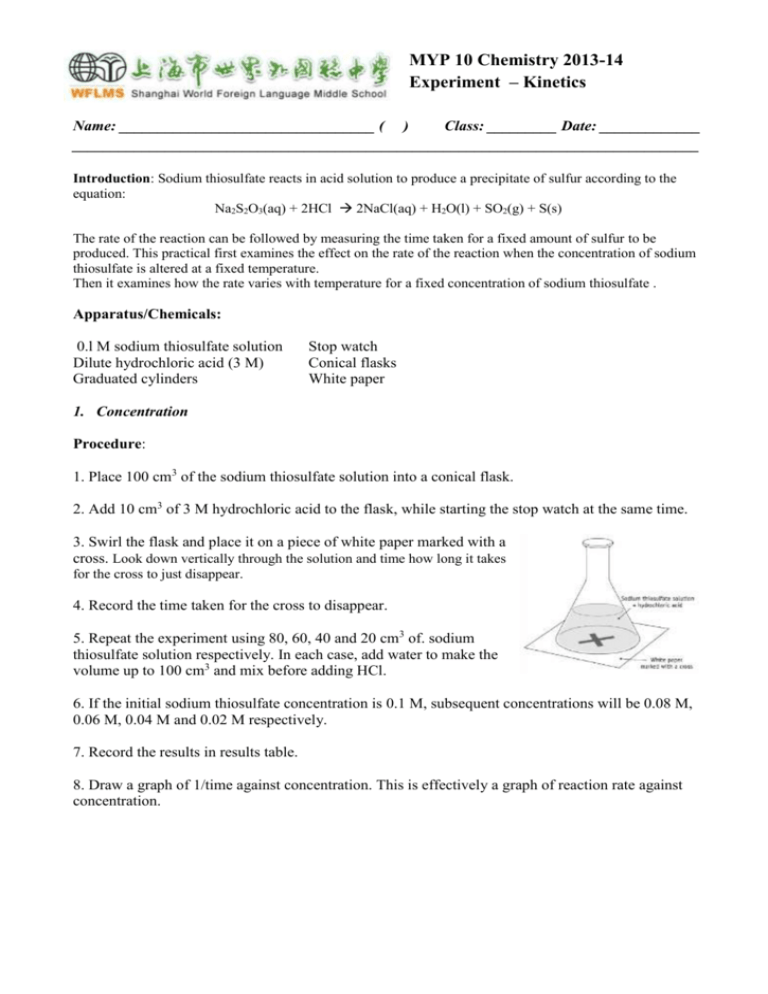
MYP 10 Chemistry 2013-14 Experiment – Kinetics Name: _________________________________ ( ) Class: _________ Date: _____________ _________________________________________________________________________________ Introduction: Sodium thiosulfate reacts in acid solution to produce a precipitate of sulfur according to the equation: Na2S2O3(aq) + 2HCl 2NaCl(aq) + H2O(l) + SO2(g) + S(s) The rate of the reaction can be followed by measuring the time taken for a fixed amount of sulfur to be produced. This practical first examines the effect on the rate of the reaction when the concentration of sodium thiosulfate is altered at a fixed temperature. Then it examines how the rate varies with temperature for a fixed concentration of sodium thiosulfate . Apparatus/Chemicals: 0.l M sodium thiosulfate solution Dilute hydrochloric acid (3 M) Graduated cylinders Stop watch Conical flasks White paper 1. Concentration Procedure: 1. Place 100 cm3 of the sodium thiosulfate solution into a conical flask. 2. Add 10 cm3 of 3 M hydrochloric acid to the flask, while starting the stop watch at the same time. 3. Swirl the flask and place it on a piece of white paper marked with a cross. Look down vertically through the solution and time how long it takes for the cross to just disappear. 4. Record the time taken for the cross to disappear. 5. Repeat the experiment using 80, 60, 40 and 20 cm3 of. sodium thiosulfate solution respectively. In each case, add water to make the volume up to 100 cm3 and mix before adding HCl. 6. If the initial sodium thiosulfate concentration is 0.1 M, subsequent concentrations will be 0.08 M, 0.06 M, 0.04 M and 0.02 M respectively. 7. Record the results in results table. 8. Draw a graph of 1/time against concentration. This is effectively a graph of reaction rate against concentration. 2. Temperature: 0.05 M sodium thiosulfate solution Dilute HCl (3 M) Conical flasks Graduated cylinder Stop watch White paper Thermometer Bunsen burner Tripop Wire gauze 1. Place 100 cm3 of 0.05 M sodium thiosulfate solution into a conical flask. 2. Warm the flask gently until the temperature is about 20 0C. 3. Add 5 cm3 of 3 M HCl, starting a stop clock at the same time, before proceeding. 4. Without delay, swirl the flask, place it on a piece of white paper marked with a cross, and record the exact temperature of the contents of the flask. 5. Record the time taken for the cross to disappear 6. Repeat the experiment, heating the thiosulfate to temperatures of approximately 30 0C, 40 0C, 50 0 C and 60 0C respectively (before adding the HCl). 7. Record the results in results table. 8. Draw a graph of 1/time against temperature. This is effectively a graph of reaction rate against temperature. Questions 1. What is the effect of increasing the concentration on the reaction time? 2. What is the effect of increasing the concentration on the reaction rate? Suggest an explanation. 3. What is meant by saying that two quantities are directly proportional? 4. What is the effect of raising the temperature on the reaction time? 5. What is the effect of raising the temperature on the reaction rate? Suggest an explanation. 6. Suggest a reason why it is not recommended to carry out the experiment at temperatures higher than about 60 0C. 7. Which is the limiting reactant in the temperature experiment? 8. Apart from concentration and temperature state two other factors which can influence the rate of a chemical reaction.
